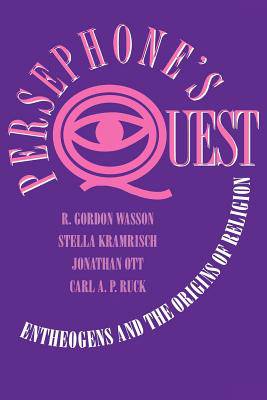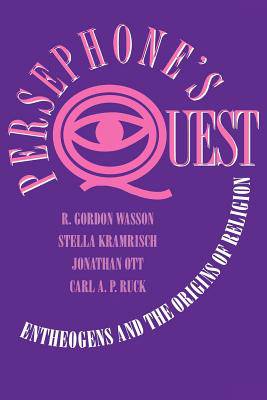
- Afhalen na 1 uur in een winkel met voorraad
- Gratis thuislevering in België vanaf € 30
- Ruim aanbod met 7 miljoen producten
- Afhalen na 1 uur in een winkel met voorraad
- Gratis thuislevering in België vanaf € 30
- Ruim aanbod met 7 miljoen producten
Zoeken
€ 34,95
+ 69 punten
Omschrijving
This fascinating book discusses the role played by psychoactive mushrooms in the religious rituals of ancient Greece, Eurasia, and Mesoamerica. R. Gordon Wasson, an internationally known ethnomycologist who was one of the first to investigate how these mushrooms were venerated and employed by different native peoples, here joins with three other scholars to discuss the evidence for his discoveries about these fungi, which he has called enthoegens, or "god generated within." In the book Wasson describes his quest for the soma plant, which led him to the Middle East and India, to shamanic rites of Siberia, Mesoamerica, and the United Statess, and to the folklore of Europeans, Bedouins, and even the Pennsylvania Dutch. Stella Dramrisch details rituals of the putka mushroom, a later substitute for soma. Jonathan Ott comments on the "disembodied eyes" found on carvings in Mexico and on an ancient ring from Crete, eyes that he argues are metaphors for the state produced by ingestion of entheogenic mushrooms. Finally, Carl A. P. Ruck relates a variety of fungi to Greek myth and ritual, focusing in particular on ergot, a common growth on barley that he feels may have been imbibed at the Eleusinian Mysteries. "[This book] is the pious meditation of an inspired devotee, a religious book in the deepest sense, the credo of a passionate initiate, indeed a convert.....A delightful book to read....[It] may take its rightful place in the long chain of imaginative meditations on the magic plant of immortality." - Wendy Doniger, Times Literary Supplement
Specificaties
Betrokkenen
- Auteur(s):
- Uitgeverij:
Inhoud
- Aantal bladzijden:
- 257
- Taal:
- Engels
Eigenschappen
- Productcode (EAN):
- 9780300052664
- Verschijningsdatum:
- 1/07/1992
- Uitvoering:
- Paperback
- Formaat:
- Trade paperback (VS)
- Afmetingen:
- 156 mm x 235 mm
- Gewicht:
- 408 g

Alleen bij Standaard Boekhandel
+ 69 punten op je klantenkaart van Standaard Boekhandel
Beoordelingen
We publiceren alleen reviews die voldoen aan de voorwaarden voor reviews. Bekijk onze voorwaarden voor reviews.











